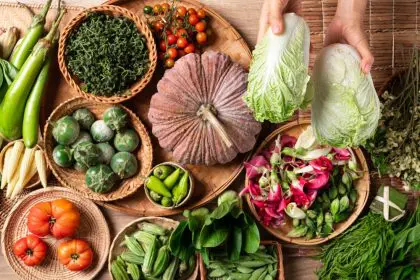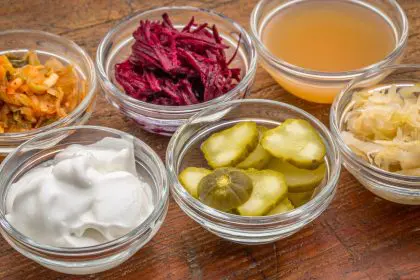Coffee enthusiasts and Frappuccino fans across America are bracing for significant changes as Starbucks announces a dramatic menu reduction that will see 13 popular drinks discontinued starting March 4. The Seattle-based coffee empire revealed on Monday that this initial cut marks just the beginning of a comprehensive menu transformation aimed at refocusing the brand on what it calls its “core identity.”
The first wave of cuts targets Frappuccino favorites
The first round of cuts predominantly affects the Frappuccino family, with nine variations getting the axe. These blended beverages, particularly the crème-based versions that don’t contain coffee, have become synonymous with Starbucks’ evolution beyond traditional coffee offerings. Fan favorites like the Java Chip Frappuccino and Caramel Ribbon Crunch Crème Frappuccino will no longer appear on official menus nationwide.
The complete list of drinks being discontinued includes:
- Espresso Frappuccino
- Caffè Vanilla Frappuccino
- Java Chip Frappuccino
- White Chocolate Mocha Frappuccino
- Chai Crème Frappuccino
- Caramel Ribbon Crunch Crème Frappuccino
- Double Chocolaty Chip Crème Frappuccino
- Chocolate Cookie Crumble Crème Frappuccino
- White Chocolate Crème Frappuccino
- Iced Matcha Lemonade
- White Hot Chocolate
- Royal English Breakfast Latte
- Honey Almondmilk Flat White
The company explains that these specific products “aren’t commonly purchased, can be complex to make, or are like other beverages on our menu.” The intricate nature of many Frappuccinos—requiring multiple ingredients, syrups, sauces, and toppings—has long been a point of contention among baristas who’ve made these time-consuming creations a running joke on social media platforms.
Back to basics: Starbucks’ new direction
This menu reduction represents a central component of what Starbucks is calling its “Back to Starbucks” initiative—a strategic pivot designed to reconnect the brand with what made it successful in the first place. According to company statements, streamlining the menu should result in shorter wait times for customers while allowing baristas to focus on quality and consistency.
The cuts extend beyond just Frappuccinos, with specialty drinks like the Iced Matcha Lemonade also getting removed despite recent changes to the company’s matcha formula earlier this year. Tea lovers will also say goodbye to the Royal English Breakfast Latte, while those preferring alternative milk options will lose the Honey Almondmilk Flat White.
For customers mourning their soon-to-be-discontinued favorites, Starbucks offers some consolation: many of these drinks can still be ordered through customization. The company suggests that Frappuccino enthusiasts might add specific syrups to the Vanilla Bean Frappuccino to recreate similar flavors. However, as many baristas on the r/Starbucks subreddit have pointed out, these customizations often come with additional charges that could make your favorite drink significantly more expensive.
A more extensive transformation underway
What’s particularly noteworthy about this announcement is that these 13 drinks represent merely the first phase of a much larger menu reduction. Starbucks plans to cut approximately 30% of its current menu by the end of the fiscal year in September. While the company hasn’t disclosed exact numbers about its current offerings, a quick count of items available on the Starbucks app suggests this could mean eliminating nearly 100 drinks, breakfast items, pastries, and snacks.
This dramatic menu consolidation comes at a pivotal moment for the coffee giant. CEO Brian Niccol, who recently took the helm after success at Chipotle Mexican Grill, is wasting no time implementing his vision for the company’s future. In a letter released Monday, Niccol announced that beyond menu changes, Starbucks will lay off 1,100 corporate employees in March and eliminate hundreds of additional open positions.
“We are simplifying our structure, removing layers and duplication, and creating smaller, more nimble teams,” Niccol explained in his statement. “Our intent is to operate more efficiently, increase accountability, reduce complexity, and drive better integration. All with the goal of being more focused and able to drive greater impact on our priorities.”
The evolving coffee landscape
The decision to trim the menu so drastically reflects broader trends in the quick-service restaurant industry, where many chains have been simplifying operations post-pandemic. With labor challenges, supply chain issues, and changing consumer preferences, Starbucks isn’t alone in reconsidering its approach to menu complexity.
What makes this particular reduction notable is how it represents a philosophical shift for a brand that built much of its recent growth on increasingly elaborate concoctions that moved far beyond traditional coffee offerings. The Frappuccino line, introduced in the mid-1990s, became a gateway product that attracted customers who might not otherwise frequent coffee shops.
Industry analysts suggest this menu consolidation could produce mixed results. On one hand, simplified operations typically lead to faster service and higher consistency—both critical factors in customer satisfaction. On the other hand, removing popular items, even if they’re relatively low-volume sellers, risks alienating loyal customers who associate specific products with the brand experience.
Alternatives for disappointed customers
For those lamenting the loss of their go-to orders, Starbucks has provided some alternative suggestions. Tea enthusiasts missing the Royal English Breakfast Latte might try the London Fog Latte instead. Those who enjoyed the White Hot Chocolate can request the regular Hot Chocolate with added white chocolate mocha sauce. And customers who preferred the Honey Almondmilk Flat White can still order a standard Flat White with non-dairy milk and sweetener.
Longtime Starbucks customers have weathered menu changes before, but rarely of this magnitude. The company has historically been more known for adding seasonal offerings and limited-time products rather than removing established menu items. This pivot represents one of the most significant menu overhauls in the company’s recent history.
The timing of these changes aligns with broader corporate restructuring as Niccol puts his stamp on the company. His track record at Chipotle, where he successfully revitalized the brand through operational simplification and focus on core offerings, provides some insight into his strategy at Starbucks.
Impact on store operations and customer experience
Beyond the corporate-level implications, these changes will have immediate effects on in-store operations. Baristas have long complained about the complexity of making certain beverages, particularly during rush hours when cafe lines extend out the door and drive-thru lanes wrap around buildings.
By eliminating some of the most time-consuming drinks, Starbucks hopes to improve throughput—the number of customers served per hour—while reducing stress on staff. This could potentially address some of the labor challenges that have plagued the company in recent years, including high turnover rates and unionization efforts at hundreds of locations.
From a customer standpoint, the promise of shorter wait times may be welcomed by those who value efficiency. However, customers who visit Starbucks specifically for its more elaborate offerings may find the streamlined menu less appealing.
The future of innovation at Starbucks
While cutting back on existing products, Starbucks emphasizes that the menu reduction will create space for new innovation. The company has historically maintained a robust pipeline of seasonal offerings and limited-time products, which drive social media buzz and bring customers through the door.
Most recently, Starbucks ventured into the instant coffee market with a product designed to froth like cafe-made beverages. The brand has also been experimenting with bold floral flavors and spicy treats for its spring menu, suggesting that innovation remains a priority despite the current focus on simplification.
The question remains whether future innovations will follow the elaborate, social-media-friendly path of recent years, or if they’ll align more closely with the “Back to Starbucks” ethos of returning to coffee-focused roots.
Reactions from the Starbucks community
Initial reactions to the announcement have been mixed. On social media platforms and forums like Reddit, self-identified baristas have largely expressed relief at seeing some of the more complex beverages eliminated. Many have shared stories of dreading Frappuccino orders during busy periods or struggling to maintain quality standards when making multiple blended drinks simultaneously.
Customer reactions, however, show more disappointment. Loyal fans of specific drinks have expressed frustration at seeing their favorites discontinued, with some vowing to learn the customization recipes necessary to recreate their preferred beverages.
The company’s stock price saw modest movement following the announcement, suggesting that investors are taking a wait-and-see approach to these changes. Wall Street analysts note that menu simplification often produces positive financial results in the short term through operational efficiencies, but the long-term impact depends on whether customer frequency and spending remain stable.
Finding balance between tradition and innovation
As Starbucks navigates this transition, the central challenge appears to be balancing a return to its coffee-shop roots with the innovation that has fueled its expansion into a global powerhouse with over 37,000 stores worldwide.
The original Starbucks experience—centered around quality coffee in a comfortable “third place” environment—remains the core of the brand’s identity. Yet the company’s massive growth has been built on continually expanding offerings that appeal to an ever-wider customer base, many of whom may not be traditional coffee drinkers.
This tension between coffee purism and mass-market appeal has been present throughout Starbucks’ history. Former CEO Howard Schultz famously sent a memo in 2007 warning that the company was losing its soul amid rapid expansion and operational changes. Now, under Niccol’s leadership, the pendulum appears to be swinging back toward simplicity and coffee-focused offerings.
Looking ahead
As March 4 approaches, bringing with it the first wave of menu reductions, regular Starbucks customers will begin adjusting to the new reality. The true test of this strategy will come in the subsequent months as the company implements the remainder of its planned 30% menu reduction.
Will customers embrace the streamlined menu and potentially faster service? Or will the absence of favorite products drive them to competitors who offer similar indulgent beverages? The answer will likely vary by market segment, with coffee purists potentially welcoming the shift while those seeking elaborate treats may look elsewhere.
What’s clear is that Starbucks is making a significant bet on simplification as the path forward. In doing so, it’s acknowledging that its menu expansion may have gone too far, creating operational complexities that detract from the core customer experience.
For a company that revolutionized how Americans consume coffee, this recalibration represents another pivotal moment in its evolution. Only time will tell whether this “Back to Starbucks” approach will resonate with customers or if the company will eventually need to find a new balance between simplicity and variety.
As Niccol stated in his letter to employees, these changes aim to make Starbucks “more focused and able to drive greater impact on our priorities.” For customers and investors alike, the coming months will reveal whether those priorities align with what made people fall in love with Starbucks in the first place.










